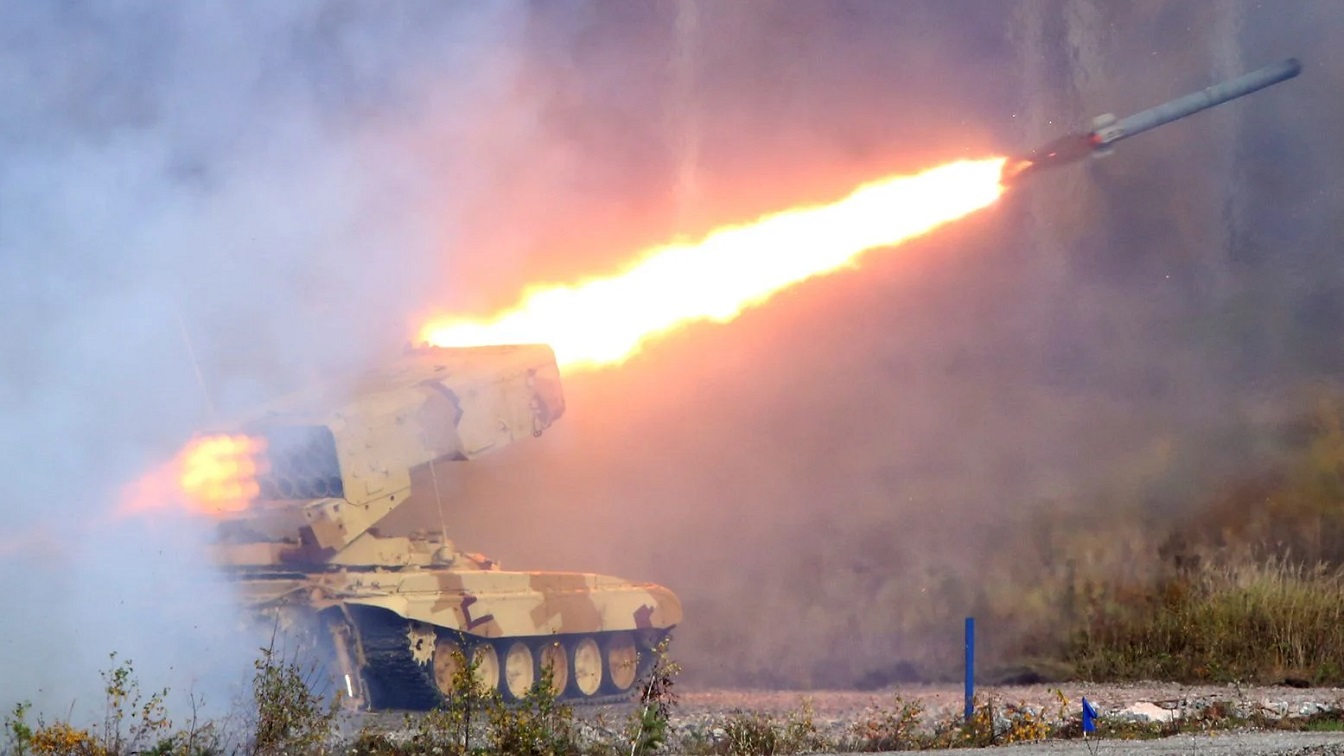Mariupol Mayor Petro Andriushchenko, who was exiled once Russians occupied the region, revealed on Telegram this week that Russian authorities have begun demolishing a famous Mariupol theater.
(Subscribe to Our YouTube Channel Here. Check out More 19FortyFive Videos Here)
According to the exiled mayor, the demolition of the building was half complete as of Friday, and it will likely be completely destroyed within a matter of days.
“While Mariupol in exile thinks about cultural de-occupation, the occupants in Mariupol demolished half of the Drama Theatre. So in two days, there will not even be a physical memory of it,” Andriushchenko said.
Video footage shared online shows a bulldozer destroying some parts of the building.
According to the exiled mayor, Russians intend to maintain only the front of the building, which will be used as a façade for a new theater that will be built in its place.
The building has been surrounded by large screens for several months.
It’s just one of a number of major construction projects initiated by the Russians in Mariupol, with a plethora of new houses and residential buildings constructed in the region in recent months. However, the construction may not simply be an effort to revitalize the town after Russia occupied and annexed the territory.
Instead, it could be an effort to hide evidence of war crimes committed during the first few weeks of the invasion.
What Happened to the Theater?
On March 16, Russian forces conducted one of the deadliest attacks against civilians in Ukraine. When the Donetsk Academic Regional Drama Theater located in Mariupol was struck, investigators believe that as many as 600 civilians inside and outside of the building may have been killed.
An investigation by the Associated Press, which included interviews with 23 survivors and rescuers, determined that the theater – which was being used as a bomb shelter – had as many as 1,000 people inside at the time of the airstrike.
Russia claims that the theater was demolished by Ukrainian soldiers, however, and that it was being used as a Ukrainian military base.
However, local people said that nobody in the area believed it was being used for military purposes, given the huge number of civilians who were using the building as a bomb shelter.
Reports Of Russians Removing Bodies
While Russian authorities in the region have focused heavily on rebuilding towns and villages, even reviving Soviet-era entertainment, including The Bremen Town Musicians musical at the Pioneer’s Palace in Mariupol, reports suggest that it could be a front to hide the atrocities committed earlier in the year.
In November, a BBC analysis of satellite images from Mariupol revealed that over 1,500 graves had been dug at a mass burial site on the northwestern border of the city. Witnesses also told the outlet that Russian authorities moved bodies from the center of the city, including from the destroyed Mariupol theater.
The destruction of the Mariupol theater, therefore, could make it difficult for investigators to determine the scale of the crimes committed in the region, presuming that Russian forces eventually leave the territory.
Olena Halushka, the co-founder of the International Centre for Ukrainian Victory, shared video footage of the demolition work at the theater on December 22 and accused Russia of purposely destroying evidence.
“They irreversibly destroy the remaining traces of one of their biggest war crimes. On March 16 Russians deliberately bombed the theater, which local residents were using as a bomb shelter, having killed a few hundreds civilians,” Halushka wrote.
More: MAGA Needs To Move on From Donald Trump
More: Would Putin Dare Use Nuclear Weapons in Ukraine?
More: Putin’s War Machine Won’t Fight in Ukraine?
Jack Buckby is 19FortyFive’s Breaking News Editor.

